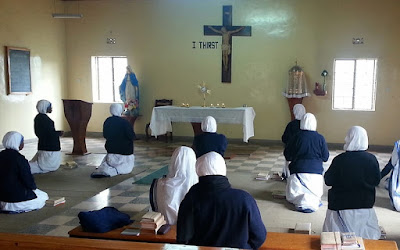Two lives of towering significance in the Church have ended in the past few weeks, Benedict XVI, and Cardinal George Pell. Because of my unusual portfolio, I had a stronger than average personal connection with them, for example, having dined with both of them. But the personal loss is of tiny significance compared to the ecclesial one.
The Church is a marvelous place to live in no small part because of the personal communion one finds there. For example, I have on my office wall a picture of my seminary class. Three have died (already!) and the rest of us are strewn about seemingly without pattern or purpose. One of my friends, as you’ve heard, is now a bishop in Texas. Another is in Rome, newly the rector of our own seminary there. One whose anniversary celebration I attended last summer is pastor of a largely Mexican parish in East Moline, Illinois. Others are arguably “normal;” one just got a new parish, but it’s on Staten Island just like every parish he has served over twenty-five years. We’re in parishes in Bismarck and Minneapolis and Silver Spring. But last year my “local” classmate, my buddy Father Mark Knestout, went from his parish in Bethesda to New York to serve the Holy See’s Mission to the United Nations.
That’s a fair assortment and wide dispersion of a relatively small sample of American diocesan priests. While the human experience of having studied together gives a recognizable connection that we all enjoy, there is a stronger and more vital connection, and that is our bond in Christ Jesus as priests of His Church.
It is easy for modern people, and Americans especially, to lose sight of the reality that is the Church. It could seem to be a large, international organization much like the United Nations, where Father Knestout now spends his days. It’s true that both have large groups of people from all over the world who often seem to be working at cross purposes, and that both seem to fail miserably far more often than they succeed at preventing or ending war and establishing peace, and that both leave many people convinced that they would be at least as well off if they had nothing to do with them. But while the United Nations is a nobly-intentioned and free association, it is also a merely human institution.
The Church is a divine institution, that is, she was founded, initiated, defined and directed by Jesus Christ, God, Who continues to participate in, protect, perpetuate and perfect her in every time and place on earth.
While the people you or I spend most of our time with, and the people who speak with authority on goings-on about the world, regard and refer to the Holy Church as if she were simply another free association of well-intentioned folks with a mixed record of success and plenty of people in her leadership and her membership who seem to be anything but honest, much less holy, it is important that we see far more than that.
The unique and universal expression and incarnation of God’s will that all men be saved from sin and death is His Son Jesus Christ, and He Himself, the Risen One, is alive, present, and at work in the accomplishment of that will uniquely and universally in the Catholic Church.
We who participate in the project, benefit from it and collaborate and cooperate with it, receive and share many human and earthly benefits in this communion. Yet we dare not be unmindful of the divine and eternal gifts that are both the source and the objective of those earthly gifts. Similarly, we must turn our eyes to the divine purpose that undergirds and sustains, propels and protects the Church in every aspect of her earthly existence.
When I look at my assortment of classmates, whether gathered for a photo or dispersed across the face of the planet, I see one priesthood, and one High Priest, accomplishing one salvation.
When I look to Rome and see great and holy men finishing their earthly course, called to their rewards, I see signs of God’s care for His servants, for His faithful, for His holy and spotless bride. So as we and the world watch for earthly events and human action that excite or appall, restore or destroy, I am moved to look, and call you to look, as people who have been told and who believe so that all this is so that the works of God might be made manifest. Look, let’s look with eyes of faith, for the divine founder at His work, to see what He is going to do next.

